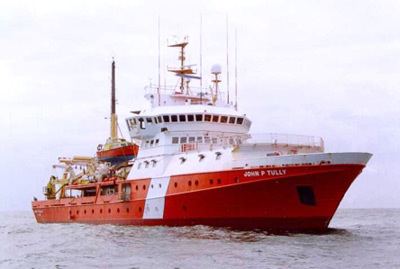Name John P. Tully Port of registry Ottawa, Ontario Commissioned June 1985 Length 69 m Endurance 1.6 months | Operator Canadian Coast Guard Yard number 302 Launched December 1984 Draft 4.5 m Builder Bel-Air Shipyard | |
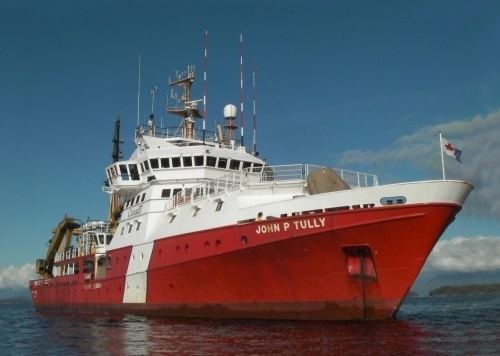 | ||
Namesake John P. Tully, oceanographer | ||
Ccgs john p tully top 6 facts
CCGS John P. Tully is an offshore oceanographic science vessel in the Canadian Coast Guard operating out of Pacific Region at CGS Base Patricia Bay in Sidney, British Columbia. Prior to 1995, the ship was assigned to Fisheries and Oceans Canada. The vessel entered service in June 1985 with the Department of Fisheries and Oceans on the West Coast of Canada. In 1995, the fleets of Fisheries and Oceans and the Canadian Coast Guard were merged under Canadian Coast Guard command and John P. Tully became a Coast Guard vessel.
Contents
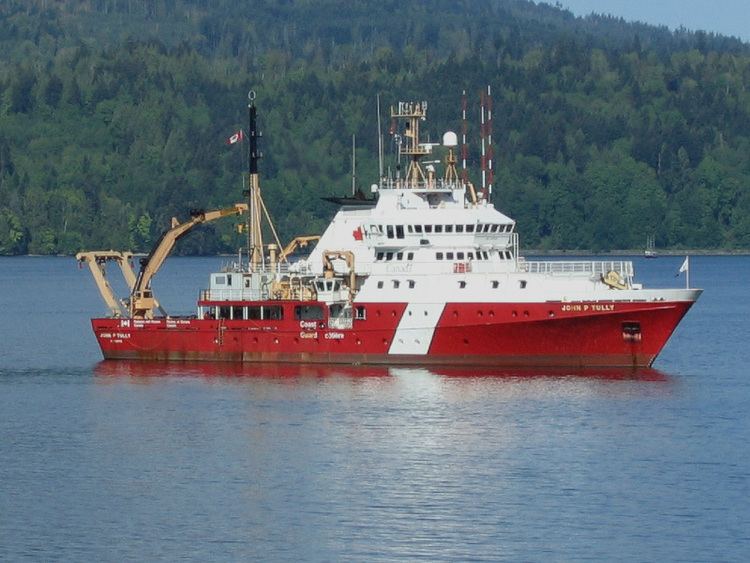
Design and description
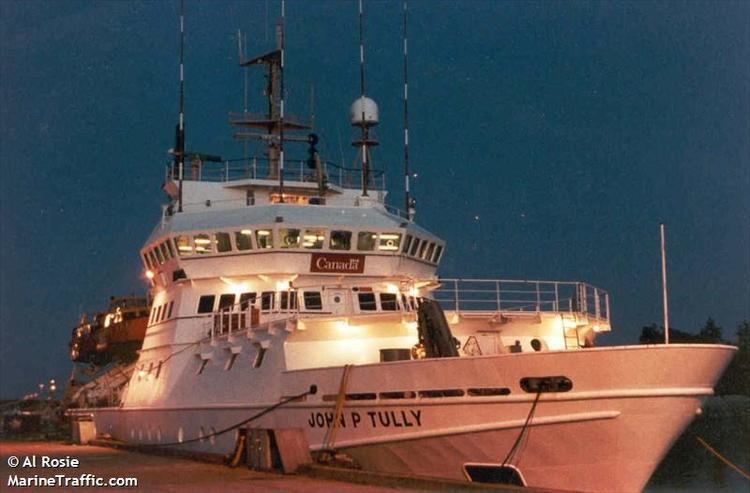
John P. Tully is 68.9 metres (226 ft 1 in) long overall and 61.7 metres (202 ft 5 in) long between perpendiculars with a beam of 14.5 metres (47 ft 7 in) and a draught of 4.5 metres (14 ft 9 in). The ship has a fully loaded displacement of 1,800 long tons (1,800 t) with a gross tonnage (GT) of 2,021 and a deadweight tonnage (DWT) of 638. The ship has two Deutz 628 geared diesel engines powering three Caterpillar C18 generators driving one controllable-pitch propeller and stern and bow thrusters creating 2,757 kilowatts (3,697 hp). This gives the vessel a maximum speed of 13.5 knots (25.0 km/h). The ship can carry 454.70 m3 (16,058 cu ft) of diesel fuel and has a range of 12,000 nautical miles (22,000 km) at 10 knots (19 km/h).

The research vessel is equipped with Sperry Bridgemaster navigational radar operating on the X and S-bands. John P. Tully has a 190 m2 (2,000 sq ft) flight deck situated between the bow and the forward superstructure. The ship can operate one light helicopter of the MBB Bo 105 or Bell 206L types from the flight deck but is not equipped with a hangar for storage. The ship has a complement of 21, comprising 7 officers and 14 crew. There is also 20 spare berths aboard the vessel.
Operational history

John P. Tully was constructed by Bel-Air Shipyard in Vancouver, British Columbia with the yard number 302 and was launched in December 1984. The ship was completed and entered service with the Department of Fisheries and Oceans in June 1985. In 1995 the fleets of Fisheries and Oceans and the Canadian Coast Guard were merged under Canadian Coast Guard command and John P. Tully was given the prefix CCGS. The research vessel was named for the oceanographer John P. Tully and is based at the Institute of Ocean Sciences at Sidney, British Columbia.
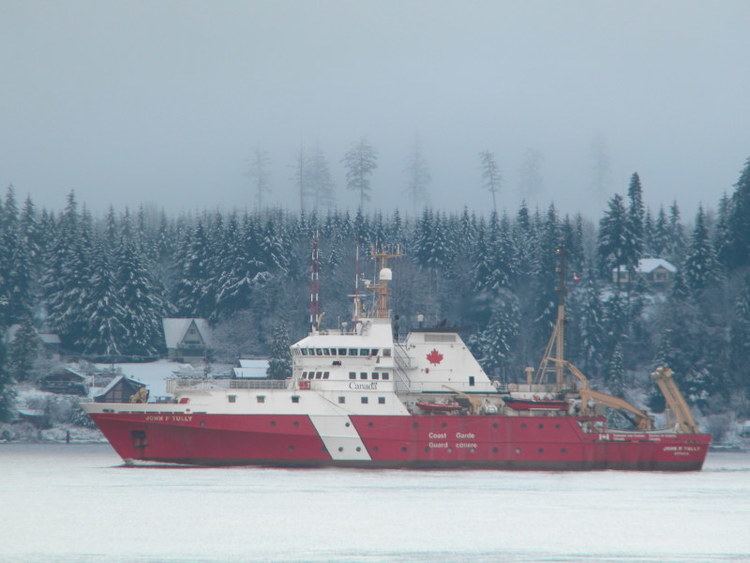
John P. Tully has been employed on joint research voyages with a variety of United States agencies, including the National Oceanic and Atmospheric Administration. On 25 October 2001, the research vessel responded to a distress call from the fishing vessel Kella-Lee 13 miles (21 km) north of Cape Scott, Vancouver Island. Due to a violent storm with winds reaching 80 knots (150 km/h), the Coast Guard vessel could not reach the site until the next morning. John P. Tully recovered two survivors from the four crew. In October 2016, after the tugboat Nathan E. Stewart sank near Bella Bella, British Columbia and began to leak oil, John P. Tully and CCGS Bartlett were deployed to help contain the spill.
